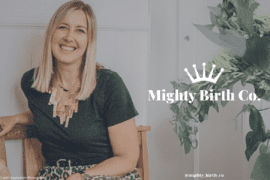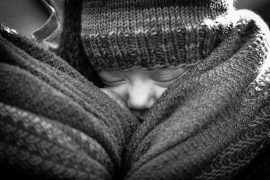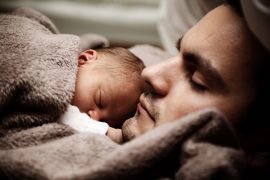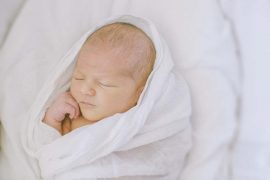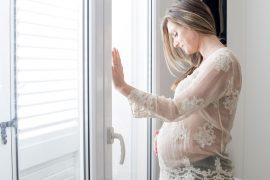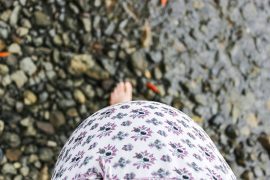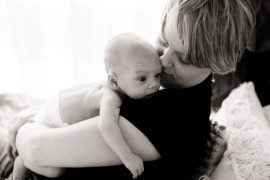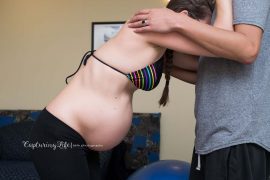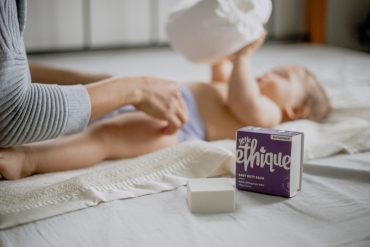The natural caesarean process
The surgery will start as normal and when the baby’s head is born, the surgical drape is dropped, and the mother is propped up to watch the birth of her baby (the mother is reassured that she will not see inside herself, due to her position). The partner may stand and capture the moments on camera.
Following the birth of baby’s head, there is a pause as the baby slowly adapts to breathing air but is also receiving oxygen from the cord (autoresuscitation).
The baby faces the mother and slowly through a process of baby wriggling and uterus contractions (walking the baby out), the body is born.
The parents call the baby’s sex, and the delayed cord clamping increases baby’s blood volume and helps the placenta separate more easily, reducing blood loss.
It is helpful to ask the team to place a plastic clamp on the cord after cutting it during surgery (instead of leaving the surgical metal clamp attached), as it is more comfortable on the mother’s abdomen.
“Womb on the outside”
The mother receives her baby immediately skin to skin to help initiate breastfeeding, ensuring warmth, comfort and calmness. The baby hears the mothers voice, smells her skin, and feels mother’s heartbeat. Studies have shown increased breastfeeding and parental satisfaction rates using this approach. (4)
The rest of the surgery continues and the baby can be labelled, measured, given vitamin K, and dad can cut the cord whilst the baby remains on the mother’s chest.
After the mother is moved from the theatre bed, the baby can be weighed then, or a little later.
Following birth
Keeping the baby skin to skin enhances early breastfeeding (4) and the use of “laid back breastfeeding position” supports baby’s self-attachment (5,6).
To support the mother’s recovery, chewing gum can help the tummy and bowel to start working more efficiently after the surgery.
Taking pain relief to help mobility and early removal of urine catheters 6-24 hours after surgery supports early discharge home and is encouraged in low-risk caesarean.
Usually, wound dressings are removed the following day and some women find creams, such as anti-keloid after 5 days can be helpful in healing. These can be found in pharmacies.
Summary
The natural caesarean is safe, with psychological and physical benefits and high satisfaction reported by the parents.
References
- Smith J, Plaat F, Fisk NM. The natural caesarean: a woman-centred technique. BJOG. 2008;115(8):1037-1042. doi:10.1111/j.1471-0528.2008.01777.x
- https://www.flutterbyfilms.co.uk/jentle-childbirth-natural-caesarean (accessed 24/08/21)
- Your body, your baby, your birth, Jenny Smith, Rodale 2009 pp175-176
- Schorn, M., Moore, E., Spetalnick, B. and Morad, A. (2015). Implementing Family-Centered Caesarean Birth. Journal of Midwifery & Women’s Health, 60(6), pp.682-690
- Moore ER, Bergman N, Anderson GC, Medley N. Early skin-skin contact for mothers and their healthy newborn infants. Cochrane Database of Systematic Reviews 2016, Issue11.Art.No:CD003519.DOI:10.1002/14651858.CD003519.pub4. Accessed 24 August 2021
- http://www.biologicalnurturing.com/video/bn3clip.html (accessed 24/08/21)
- https://www.nuh.nhs.uk/caesarean-birth-c-section/ (accessed 24/08/21)
- https://www.abc.net.au/news/2016-08-23/maternal-assisted-caesarean-mother-helps-delivery-baby-boy/7776654 (accessed 24/08/21)
Jenny Smith is a clinical NHS midwife, Founder of Birth Continua and Jentle Childbirth Foundation Charity. She passionately believes in a “family centred” approach to all birth and rethinking “maternity architecture”, improving birthing environments for all.


